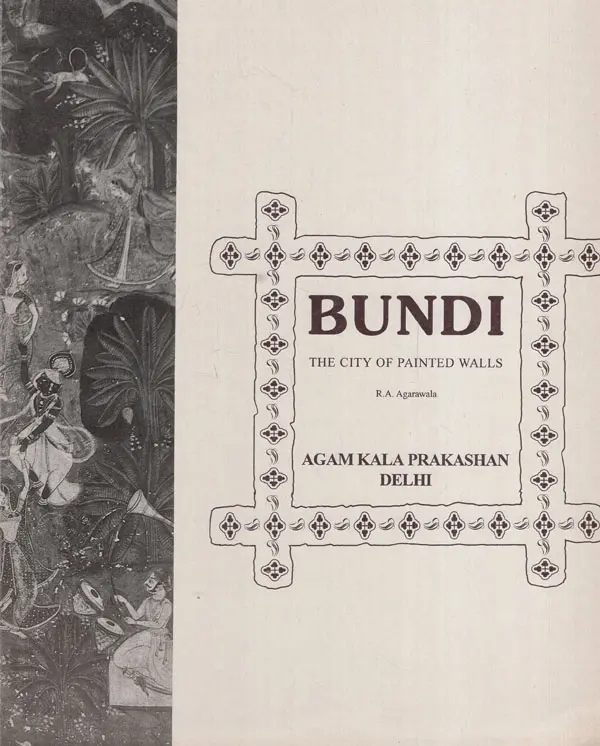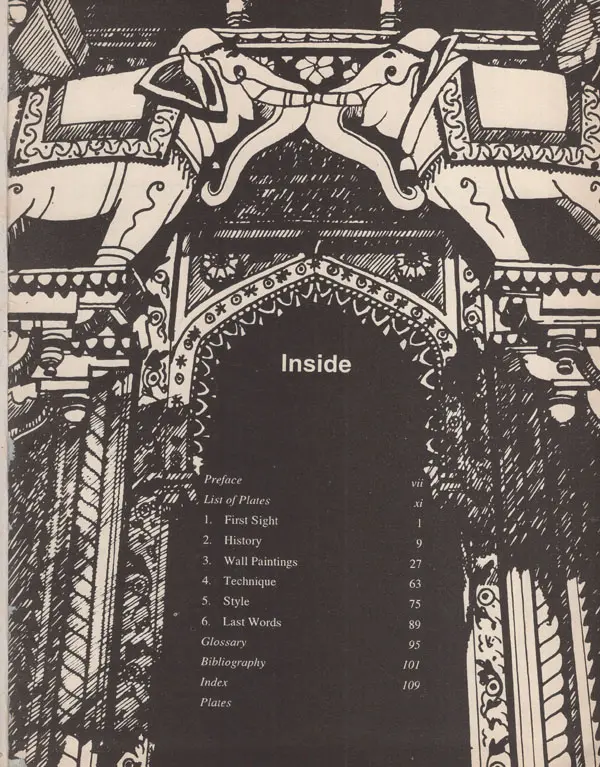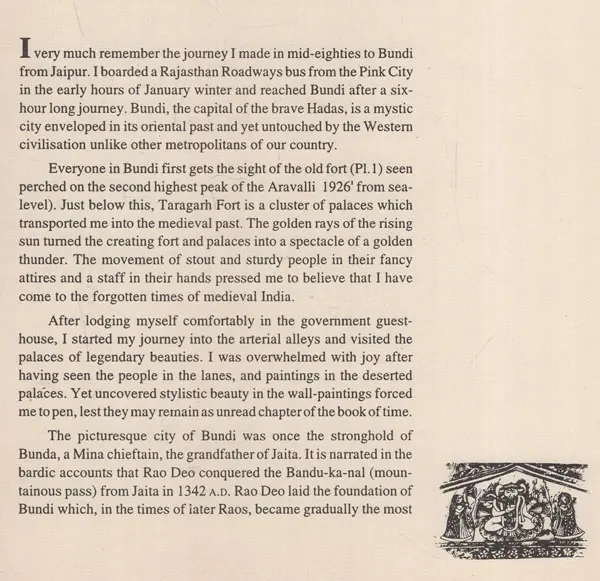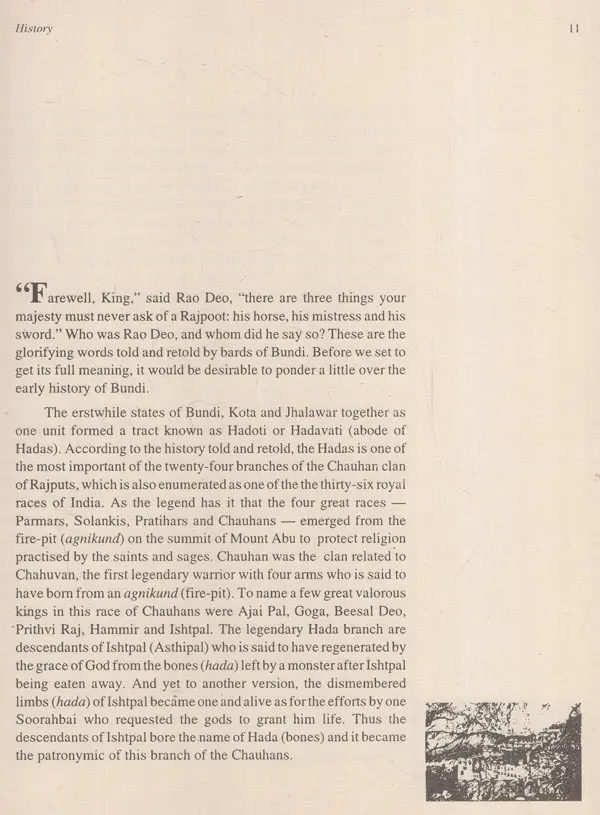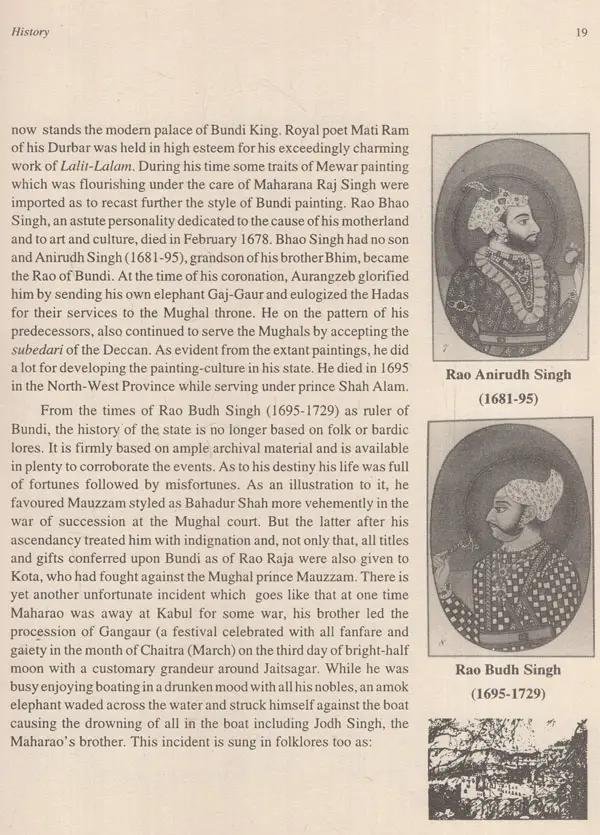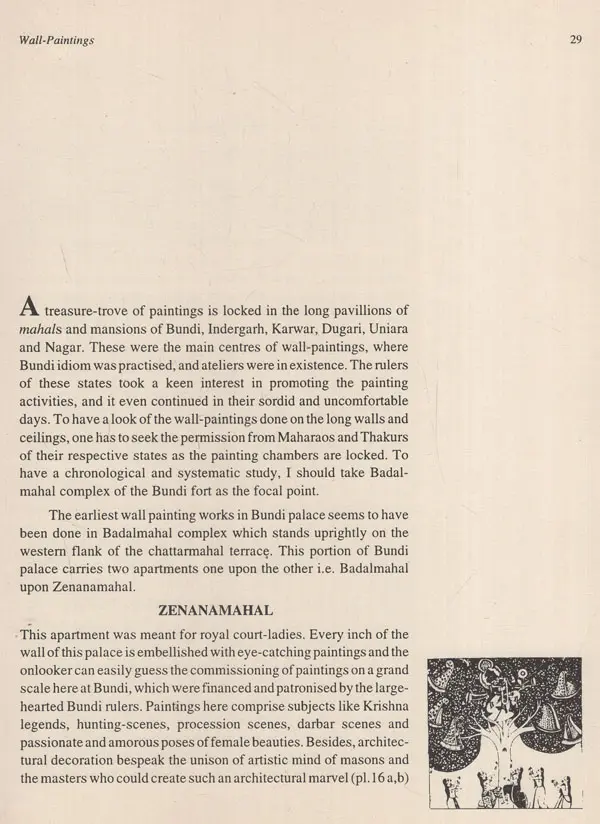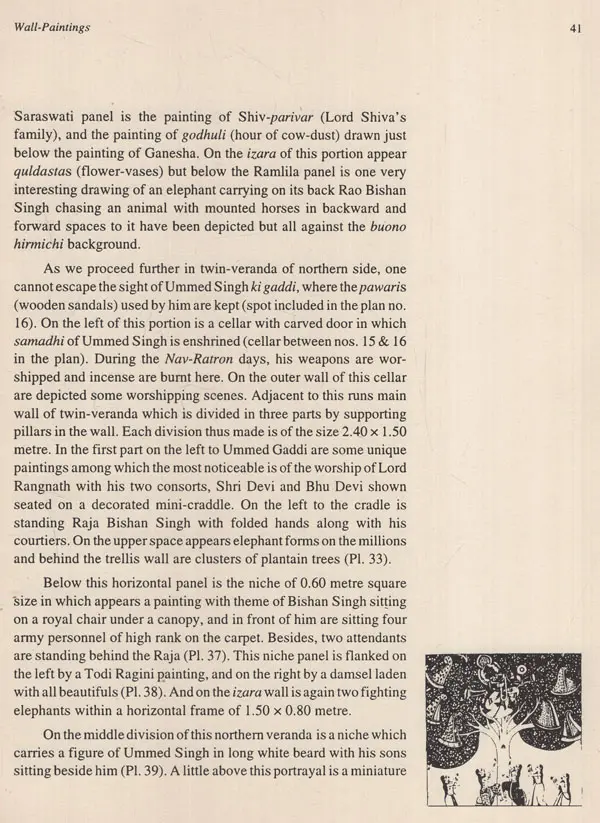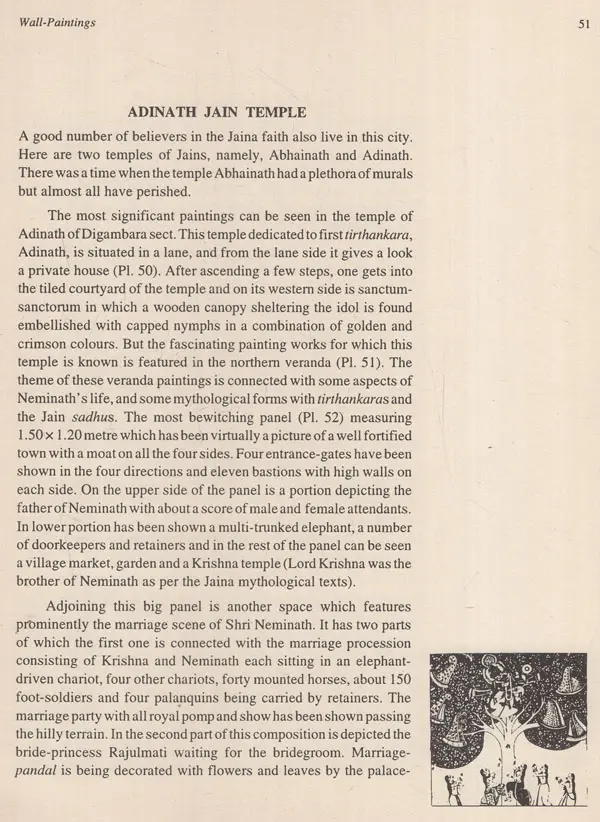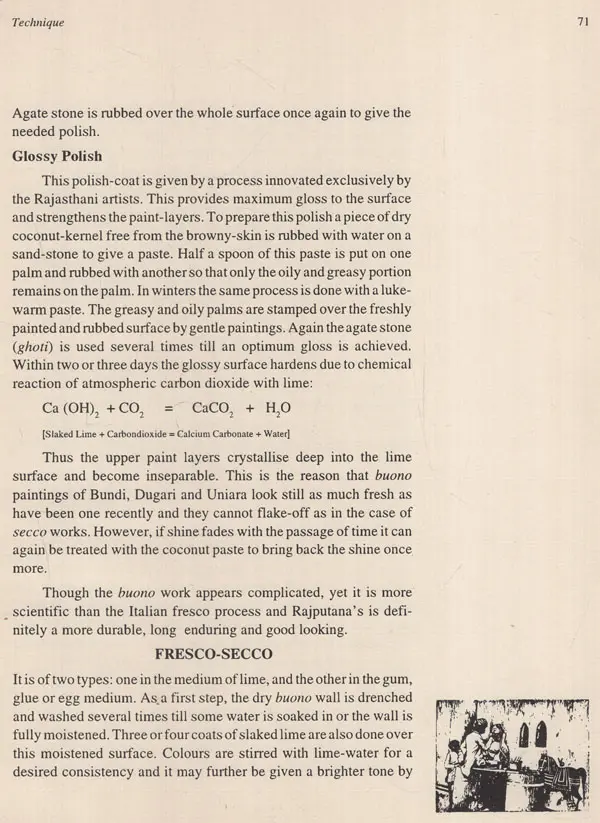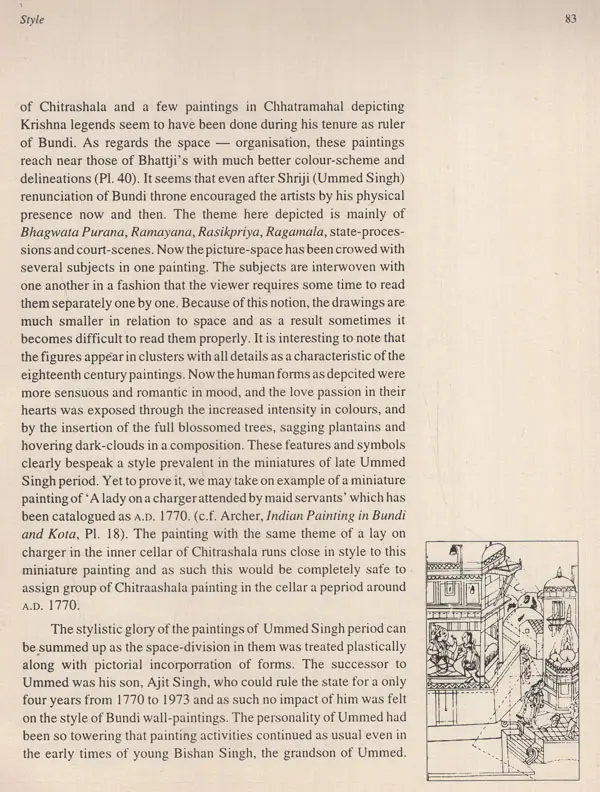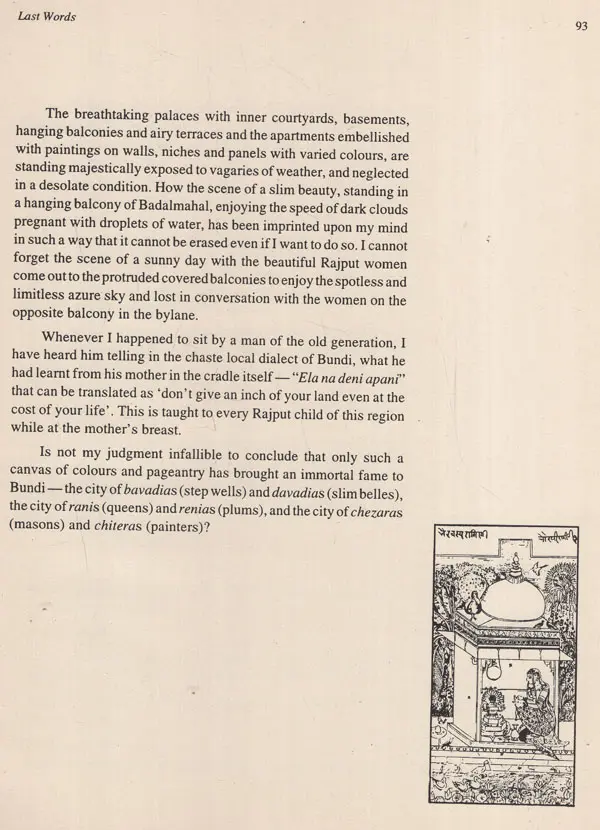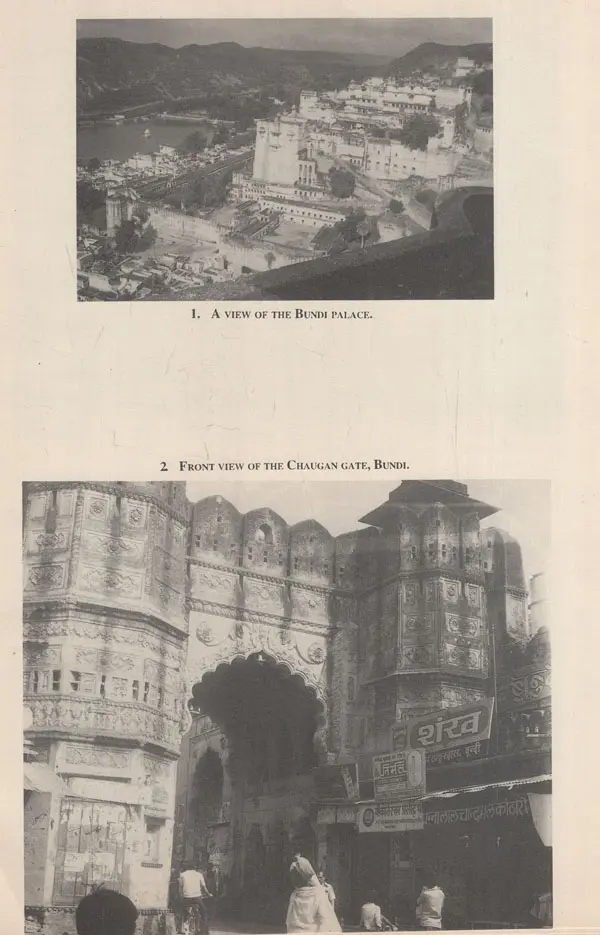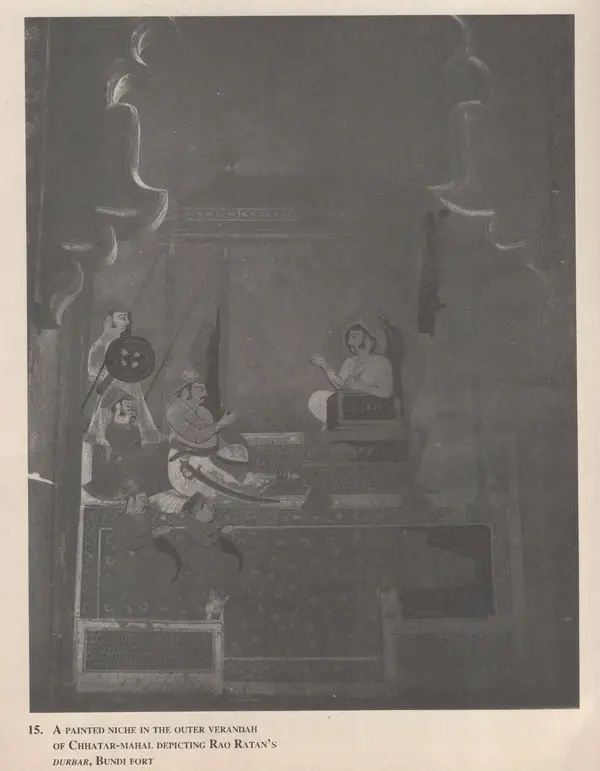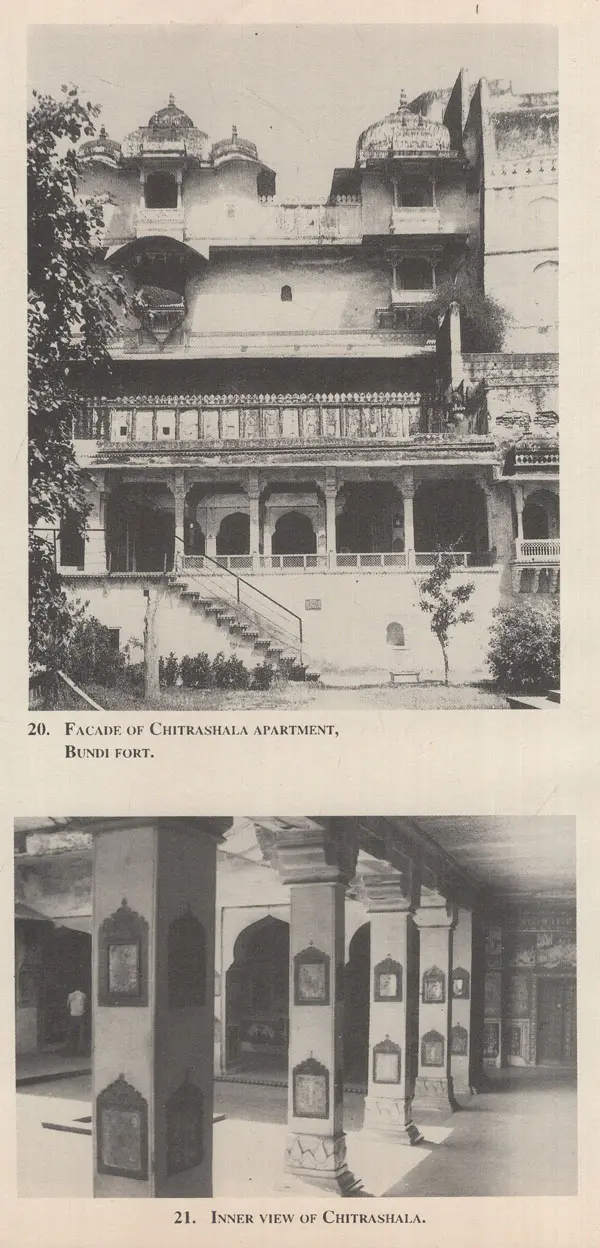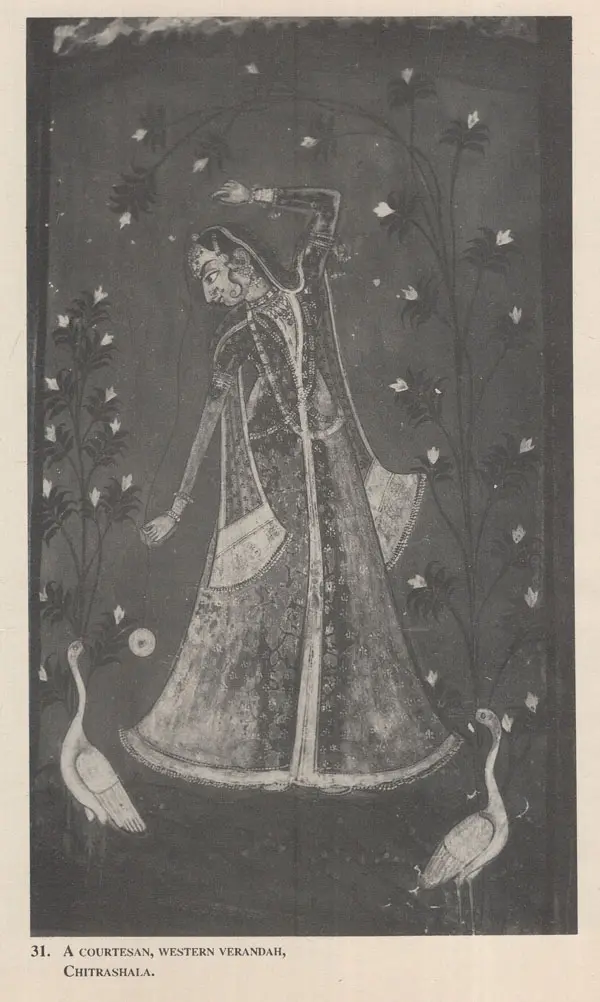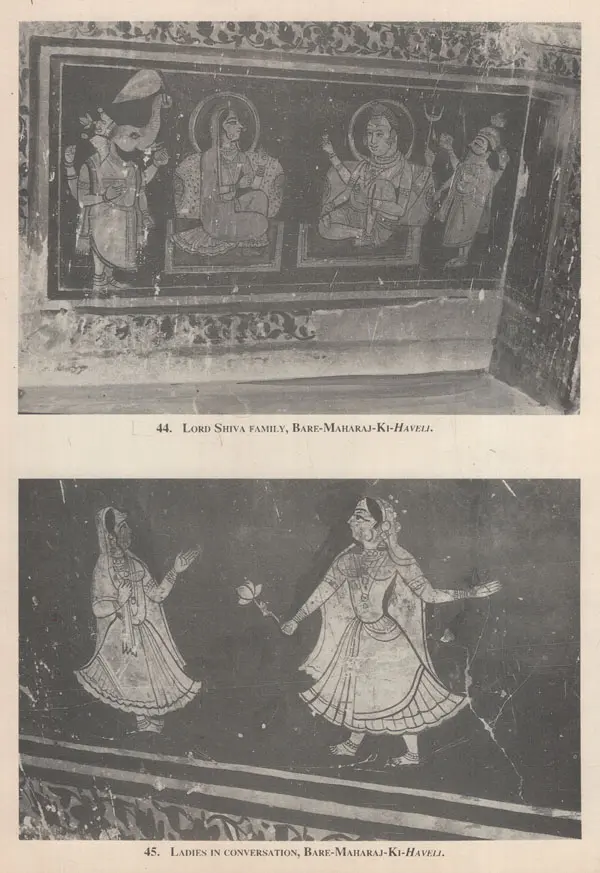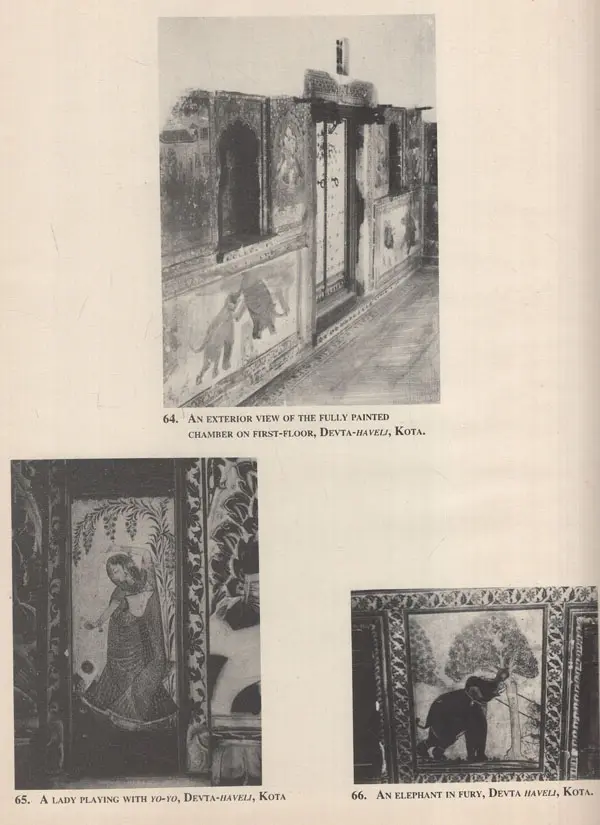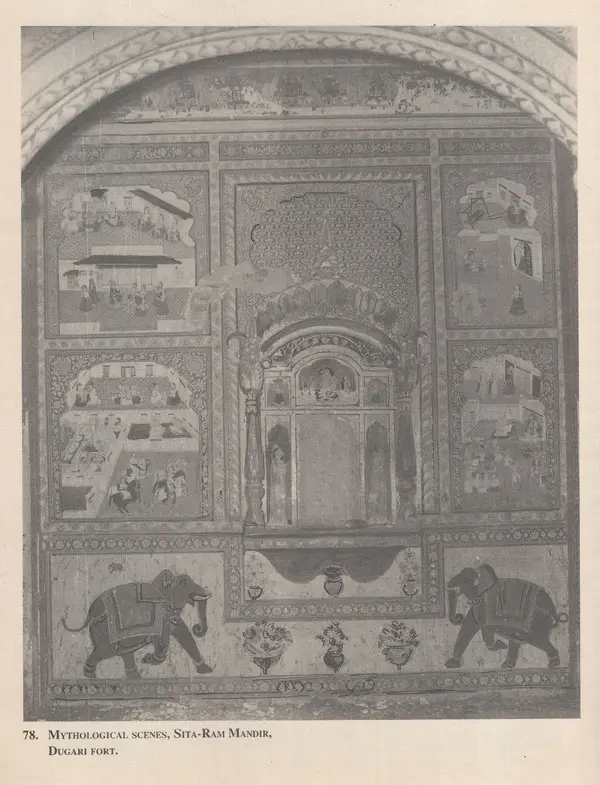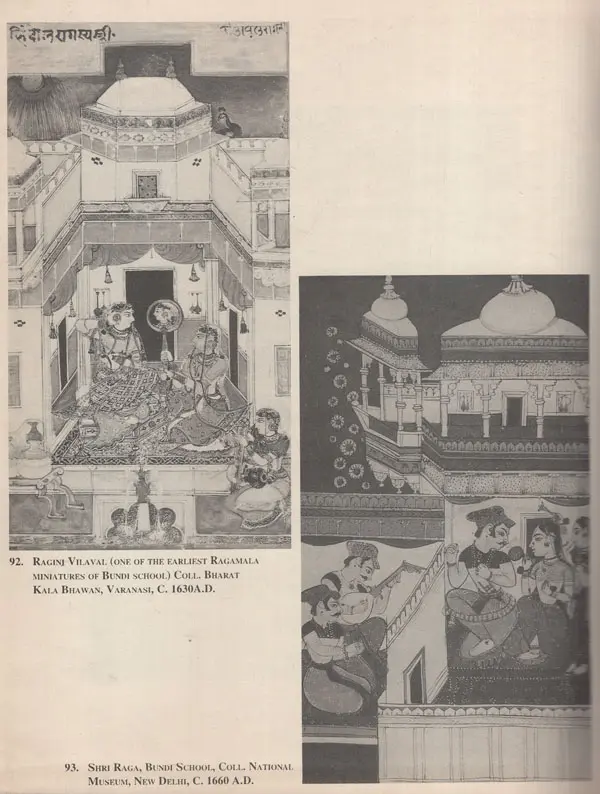
Bundi: The City of Painted Walls (An Old & Rare Book)
Book Specification
| Item Code: | UAO704 |
| Author: | R. A. Agarawala |
| Publisher: | Agam Kala Prakashan, Delhi |
| Language: | English |
| Edition: | 1996 |
| ISBN: | 817320019X |
| Pages: | 200 |
| Cover: | HARDCOVER |
| Other Details | 11.00 X 9.00 inch |
| Weight | 990 gm |
Book Description
Bundi the pivotal centre of Haroti region, without any exception, has had a long and chequered history of wall paintings But curiously enough, the walls at Bundi, did not come to the notice of any art historian so far in this book an attempt has been made for the first time to give a detailed account of these murals and their place in the history of Indian painting. After anaysing the specimens, mainly frons Badalmahal, Chhatarmahar and Chitrashata and from Bhatt Maharaj Ki have in Bundi town, and also from fort-walls of Indergarh and Dugari thikanas, DR.AGARAWALA concludes that a distincitive school of wall paintings flourished in Bundi, which during the region of Maharao Bishan Singh (1773-1821) reached at its zenith, Inspite of Mewan and Mughal influences, the paintings on Bundi walls drew their main strength from the genius of the place.
To convey a sense of their richness and subtlety, DR. AGARAWALA offers a close analysis of the style and technique of these wall paintings and maintains that such and analysis is far more rewarding in art criticism than an analsis based on historical and social accounts. Nevertheless, the variety of the themes has also been examined.
THE BOOK first of its kind, bringing to light the existence of a school of wall in this region, is well illustrated with line-drawings and numerous photographs.
DR. AGARAWALA's entire life has been devoted to the study and exposition of various aspects of wall paintings particularly of Rajputana kingdoms and kinglets, and as such his keen interest in the subject has provided in him an empetus to travel extensively in different parts of India. He has held many positions in different National and international art organisations, and in vanous commuters of a number of Universities and Education Boards. Among his many books many be mentioned MARWAR MURALS, KALA VILASA ART AND ARCHITECTURE OF JAISALMER, and WALL PAINTINGS FROM CENTRAL INDIA is an outcome of a number of sojourns entitled as BUNDI THE CITY OF PAINTED WALLS while working on a project connected with the painting culture of Haroti region.
DR. AGARAWALA has had a long teaching and research experience of over three decades and is presently holding the Post of Reader and Head of he Department of Fine Art at Meerut College, Meerut.
[The famed Bundi town, known the world over, is the place for pleasure and plenty.]
Thus spoke Mati Ram, the court poet, about the beauty and prosperity of Bundi The walls of Bundi, of kingly abodes or of the common men or the cenatophs or the temples, are resplendent with chitrum (paintings) of celestial beauty and can even be seen to date. However, an existence of painting school at Bundi could not get the sight of early historians like Tod, Hendley, Coomaraswamy and Gangoly at the formative stage of Indian art. The first reference to a live tradition of painting came from Lord Kipling, known as the uncrowned poet-laureate of the British India, who had been to Bundi in 1887 and saw himself the artists at work in Chitrashala, preparing paintings in wet of the fighting elephants on the lower walls (izaru). But the first exposure to Bundi paintings as a school came through an exhibition at Calcutta, held between 29 January and 12 February, 1949, of the selected miniatures from Maharao's personal collection organised by Sudhanshu Kumar Roy, a teacher of Art at Hadendra College, Bundi, on behalf of the National Heritage Preservation Society of Rajasthan (Bundi) under the cooperation of the Rama Krishan Mission Institute of Cultures, Calcutta.
To solemnise this occasion. Suniti Kumar Chatterjee, a re nowned Indologist, prepared a write-up of which the concluding remark was:
The fresco paintings of Bundi are also an unexplored field. All this promises to bring to Bundi a new recognition, and the present occasion of the exhibition of a few things in painting in the Bundi style which is now on in Calcutta, is the first step in the recognition from Bengal and Eastem India (Anand Lat Poddar Sri Pashpi, pp. 323-25).
The exhortation at this form by Chatterjee hid foundation for researches in Bundi paintings and as a result, if artist and comoisseur Ram Gopal Vijayvargiya of Jaipur in 1953 (see, "Bands Chitrashala ka Digdarshan", Chap 3 in Rajasthani Chitrakala), Dr. Moti Chandra also in 1953 ("The paintings of Bundi", Western Railway Annual Bombay 1953, and the same article reprinted under the title "Bundi" in Marg, Vol XI, No 2, 1958, pp. 50-52) and Karl Khandalawala in the same year (A Group of Bondi Miniatures in the Prince of Wales Museum, Bulletin of the Prince of Wales Museum, Bombay, 1953 pp 25-15, pls XV-XXIV), provided very useful information which was sufficient to give this school a distinct position. No systematic work on Bondi paintings was available till the publication of W.G. Archer's Indian Painting in Bundi and Kata, (1959). However, in the same year Promod Chandra published a thought-provoking monograph entitled Bundi Paintings, devoid of any reference to the rich tradition of wall paintings In this succes sion, in 1965, a brief article by M.S. Randhawa on Chitrashala Wall Paintings appeared in Roopalekha, Vol XXXV, nos 1 & 2. Dr. Randhawa, at the time of my Ph. D. viva in 1968, desired that a comprehensive work should be undertaken on wall paintings of Bundi by some scholar like me. Further, in 1965, Stuart Cary Welch. in collaboration with Milo Cleveland Beach, published from New York a good monograph, Gods, Thrones and Peacocks, and in 1970, appeared a small but informative write-up on Bundi painting by S.K Andhare, published by Lalit Kala Academy, Delhi. Later, in 1974, Milo Beach single-handedly authored Rajput Painting at Bundi and Kota from Ascona, Switzerland.
This way, what I feel, Bundi school of miniatures got a prestigious and independent place in scholarly world but none, except the scholars Sunit Kumar Chatterjee and M.S. Randhawa, attached any significant importance to the rich treasure of wall paintings. The idea of Chatterjee for Fresco paintings of Bundi. being an unexplored lot had stirred my mind seriously to collect and analyse this precious heritage, otherwise the paintings wild disappear in wint of the proper care.
Keeping the urgency in mind, Thad to braveling and uning dres across the vast region of Haroti. A number of times I went fo on a bicycle or in village-tongs in heat-splashing summers but always remained in my elements and as such could collect ample material which would supplement vitally the studies so far done by the famed historians as referred to Should I not say that the project like this cannot go smoothly unless a host of scholars, people und sympathisers in important positions extent their help, cooperation and blessings.
In this endeavour of mine, first of all I am deeply indebted to Maharaja Kesari Singh Ji of Bundi and Maharaj Kumar Brij Raj Singh Ji of Kota for according me the kind permission to visit and revisit the several apartments and chambers in their respective palaces. I am equally grateful to Thakurs of Uniara, Dugari, and Indergarh for providing the instant permission to study paintings in their respective castles, and Dr. Madan Mohan Bhatt of Bundi deserves equal gratitude for the help and sharing our despondency towards the feeble condition of the wall paintings in BhanJi Ki Haveli Kunwar Sangram Singh of Nawalgarh State shall forever be remembered for the present work would not be completed but for his help and guidance. I am highly obliged to Rao Mukund Singh of Bundi, formerly Treasurer of Surya Mall Mishran Centenary Cel ebrations 1969, and Shri Madan Mohan Shastri. Curator, Maharao Madho Singh Museum Trust, City Palace, Kota for providing me a lot of informations regarding the places of paintings. I owe much debt to Dr. O.P Agrawal, Director, NRLC, Lucknow for his very special guidance regarding the technical aspects of Bundi wall paintings.
**Contents and Sample Pages**
